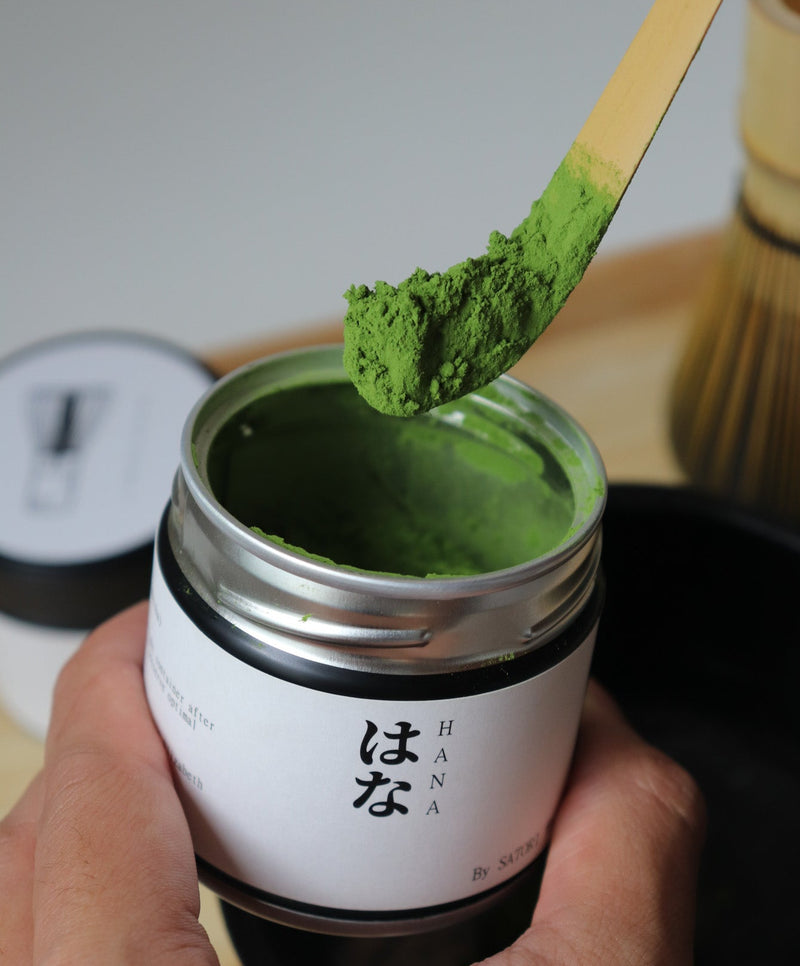At Satori Tea House, every bowl of matcha we serve holds a story—one steeped in centuries of tradition, mindfulness, and craftsmanship. One of the most common questions we hear is:
“Is matcha from Japan or China?”
The answer takes us on a journey through history, across borders, and deep into the cultural practices that shaped what matcha is today.
🌿 The Origins: Ancient China
Matcha’s story begins in ancient China during the Tang and Song Dynasties (7th–13th centuries). At the time, tea leaves were steamed, dried, and often compressed into bricks to make them easier to store and transport. Some of these tea bricks were ground into a powder and whisked into hot water—a method particularly favored by Zen Buddhist monks during meditation, thanks to its calming and focusing properties.
This powdered tea was an early predecessor to the matcha we know today, and it served as a valuable tool in spiritual and scholarly circles.
🍵 The Journey to Japan
In the 12th century, a Japanese monk named Eisai returned from his studies in China with more than spiritual insight—he brought with him tea seeds and the practice of drinking powdered green tea. Eisai believed this tea promoted clarity, vitality, and focus, especially during long periods of meditation.
The ritual of drinking powdered tea quickly took root in Zen temples across Japan. Over time, Japanese monks and tea masters began to refine the process, cultivating a unique approach that would eventually evolve into the Japanese tea ceremony—a graceful and meditative tradition centered around matcha.
🇯🇵 Japan Perfects the Art of Matcha
While matcha’s roots lie in China, it was in Japan that the tea truly came into its own. Through centuries of careful innovation and cultural integration, Japanese tea farmers and artisans elevated matcha to a ceremonial standard.
Key elements of Japanese matcha include:
-
Shade-grown tea plants, which develop a vibrant green color and a smooth, umami flavor due to higher levels of chlorophyll and L-theanine.
-
Stone-grinding, a traditional method that slowly and gently turns tencha leaves into a fine, silky powder without overheating or damaging the nutrients.
-
Ceremonial preparation, where the act of making and drinking matcha is treated as a mindful, intentional ritual.
Japan preserved and perfected the powdered tea tradition, turning it into a cornerstone of cultural and spiritual life.
🇨🇳 Chinese Matcha Today
China has re-entered the matcha space in recent years, largely to meet growing global demand. While Chinese matcha is widely available, it is typically produced using different methods and is often geared toward large-scale, commercial markets.
In contrast, Japanese matcha remains rooted in craftsmanship and ceremony, making it the preferred choice for those seeking authenticity, richness in flavor, and a deeper connection to tradition.
Why Satori Tea House Sources from Kyoto, Japan
At Satori Tea House, we source our matcha from the lush, historic tea fields of Kyoto, where farmers have cultivated matcha using traditional methods for generations.
Our matcha is:
-
100% shade-grown and handpicked
-
Stone-ground for a silky texture and maximum nutrients
-
Packed with L-theanine for a calm, focused energy
-
Naturally vibrant, creamy, and umami-rich
Every sip offers more than taste—it offers a moment of mindfulness and a link to centuries of heritage.
Key Takeaway
Matcha’s journey began in ancient China as a meditative tea used by monks and found new life in Japan, where it was refined into an art form. With centuries of craftsmanship behind every step—from cultivation to ceremony—Japanese matcha today reflects a deep tradition of mindfulness, quality, and intentional living.
Ready to Taste the Tradition?
Experience matcha the way it was meant to be—authentic, vibrant, and crafted with care.
👉 Shop now


